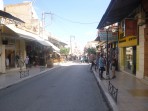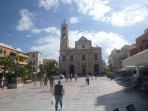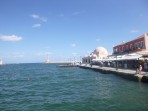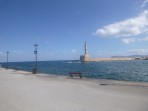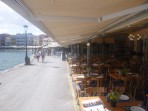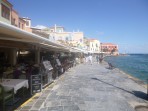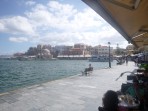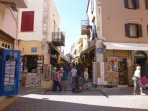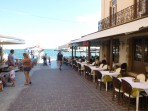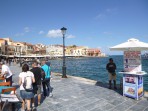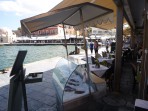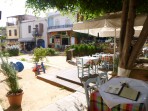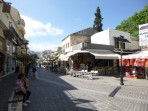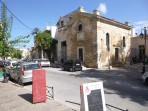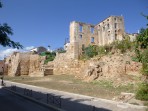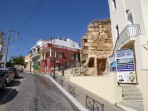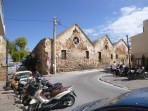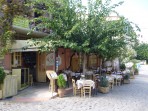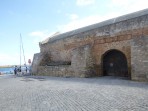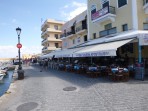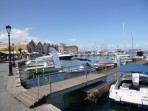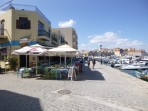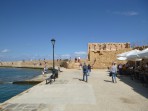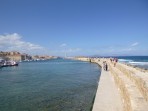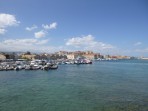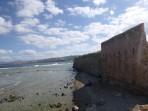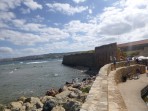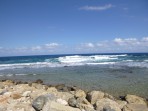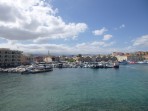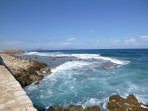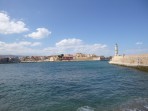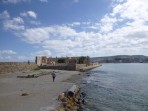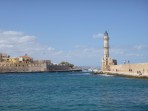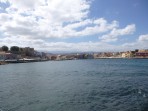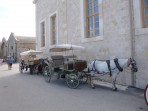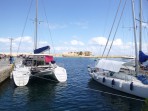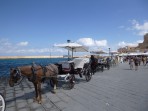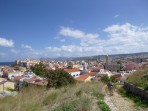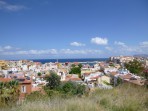Chania - Crete
Hania
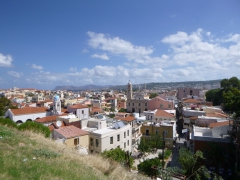
The large and lively seaside resort of Chania is located in the northwestern part of the Greek island of Crete, about 141 km west of the capital Heraklion (Iraklion). Chania, sometimes also referred to as the "Venice of the East", is the second largest city on the island and boasts a particularly beautiful historic district.
Characteristics of Chania
Chania is above all a beautiful harbour town washed by the waters of the Cretan Sea and with 55,000 permanent inhabitants it is the second largest city in Crete. It is also the capital of the eponymous prefecture of Chania, which covers the westernmost part of the island of Crete, and was even the capital of the whole of Crete until 1972. Chania also has its own airport.
Chania lies on the remains of the ancient city of Kydonia and several nations have left their indelible imprints here. Today Chania is a very busy city with a beautiful historic centre and the important port of Chania, while inland the high mountains of Lefka Ori loom in the background,
The harbour area in particular is a very lively and sociable place, with many tavernas, restaurants, cafes and shops, and you can even hire a horse-drawn carriage or have your own portrait painted. The harbour area, the so-called Old Town of Chania, is home to a large number of interesting historical monuments. The modern part of Chania is already made up of new buildings and is also heavily trafficked (especially on Saturday mornings, when it is the so-called market day, and on Sundays the market is closed). If you are visiting the town from another Cretan resort, we recommend parking in the designated area before entering the centre itself. An interesting feature of the bustling centre is the peaceful town park with its mini-zoo.
History of Chania and historical monuments
The origins of the settlement of this place date back to the Minoan period, when the city of Kydonia existed here. In 828 AD, however, the city was conquered and destroyed by the Arabs. In the 14th century, the Venetians took control of the town and called it La Canea. In 1629 the Venetians enlarged and strengthened the Firkas fortress, the remains of which can still be seen today. But Chania had to face attacks by pirates and in the 17th century the city was then occupied by the Ottoman Turks. In 1913 Chania, like the whole of Crete, became part of Greece.
Most of the historical monuments that have survived at least partially to the present day are located in the so-called Old Town of Chania. These monuments date from different historical stages of the city's development, mainly Venetian and Turkish buildings, but also remains of Minoan settlements have been discovered.
- Remains of Minoan buildings indicate that an important settlement of this time existed on the hill of Kanevaro Odos (the hill running into the harbour) - the ancient city of Kydonia. Some of the excavations can only be seen from behind barbed wire fences, but individual traces of the Minoan culture can be seen in the narrow streets of the old town. Many remains of the old city of Kydonia still remain hidden under houses and other buildings from later years. Finds from this period are preserved in the Archaeological Museum of Chania.
- The port of Chania is a bustling but also very picturesque place, decorated with preserved Venetian and Turkish monuments and fishing boats floating on the sea. The old Venetian houses are painted mainly in white or one of the soft pastel colours.
- Of the original 23 large Venetian shipyards (armouries), about 7 are still standing today. They date back to the end of the 15th century, when the Venetian fleet dominated the Mediterranean and the large shipyards were used for shipbuilding and ship repair. The buildings are roughly 50 m long and 9 m wide and used to have large wooden gates that opened directly into the sea so that ships could easily enter. Today there is already a quay in front of the preserved shipyards.
- At the end of the long pier in the harbour, the tall La Laterna lighthouse rises. Originally there was a Venetian lighthouse (built around 1570) called Pharos, which consisted of large stone blocks. In the mid-19th century, the tower was restored and rebuilt by the Turks.
- The Janissaries Mosque, dating from 1654 (also known as the Hassan Pasha Mosque or Janissaries Bastion), is also located near the port. The Turks built it with one large and six small domes. The mosque once had a minaret, but this was demolished in the early 20th century. Today the building is mainly used for exhibitions and other social events.
- The remains of the old Firkas fortress are located on a spur of land at the entrance to the harbour, directly opposite the harbour lighthouse. Its purpose was clear - to protect the entrance to the harbour. The original Venetian fortress from 1629 was rebuilt during the Turkish occupation. In addition to the fortress itself, several parts of the old city walls have been preserved around the old town of Chania.
- In the vicinity of the old fortress is the Maritime Museum, which boasts an amazing exhibition on the Battle of Crete and an exhibition of marine corals and shells. To make sure you don't miss the museum, there is a large anchor and a large ship's propeller in front.
- The church of Agios Nikolaos was originally a Christian monastery, but the Turks converted it into a mosque. A minaret was added to the building and a new bell tower was added in 1912.
- The large, covered market hall of Chania was built in 1913 to celebrate the reunification of Crete with Greece. The market has a specific cross shape and is located on the border of the Old Town. Traders here sell everything from tourist items (clothing, jewellery, souvenirs) to various types of meat and fish to spices and mushrooms. The market is usually closed on Sundays.
Eleftherios Venizelos Square is a very busy place in the modern city, where you can sit in the outdoor gardens of the local tavernas and cafes, browse the small shops or just soak up the atmosphere of the place. Chania City Park is located just a short walk from the city centre and is such an oasis of peace and relaxation amongst the busy streets of the city. It was created during the Turkish occupation and today you can see several wild goats (called kri-kri goats).
There are three major museums in Chania - the Folk Art Museum (housed in the local Catholic church), the Archaeological Museum (home to the Gothic church of St Francis) and the Maritime Museum (housed in the old Firkas Fortress). The 16th-century Church of San Salvatore and the San Nicolao Monastery in Splantzia Square are also popular tourist stops.
Coast and beaches around Chania
The main beach of Chania is the long sandy beach of Nea Chora, located about 1 km west of the town centre (about 15 minutes walk from the old port). Nea Chora is an organized and very well equipped beach, of course there are several tavernas, restaurants and cafes in its vicinity.
The second beach of the resort is called Kladissos, it stretches behind the river of the same name and gently transitions into Aptera beach. Kladissos beach is a long, mostly sandy beach, with small pebble coves in places. Although it is close to Chania and very pleasant, it tends to be very quiet and not organised.
There are other nice beaches around Chania. To the west are the long sandy beaches of Daratso, Agia Marina and Platanias. To the northeast on the Akrotiri peninsula are the quieter beaches of Stavros, Kalathas and Tersanas. To the east (towards the narrowest point of the peninsula), Kalives or Almirida beaches are also easily accessible.
Who is the centre suitable for?
Chania is visited by most tourists on day trips or when wandering around the beauty of the western part of Crete. Especially the so-called Old Town of Chania hides a lot of beautiful historical monuments, so if you want to explore them more thoroughly, it is not a problem to spend a few days here - the resort of Chania offers various forms of accommodation from nice hotels to individual apartments.
The resort of Chania is thus suitable for those who like to combine quality tourist facilities and interesting surroundings - in addition to important historical monuments, there are also nice sandy beaches or beautiful nature suitable for romantic walks and longer hikes. Some people also use Chania as a good starting point for wandering around the western part of Crete.
More touristic destinations of Crete
Close resorts: Daratso, Kato Galatas (Kalamaki - Chania)
Most favourite resorts of Crete: Adelianos Kampos, Agia Marina, Agios Nikolaos, Heraklion (Iraklion), Hersonissos, Chania, Ierapetra, Kalamaki (Matala), Malia, Platanias (Chania), Rethymno, Stalis
Resorts, beaches, sights or trips - clearly listed on the map of Crete.
Did you visit this place and do you have some additional informations, interessting observation or photos?



